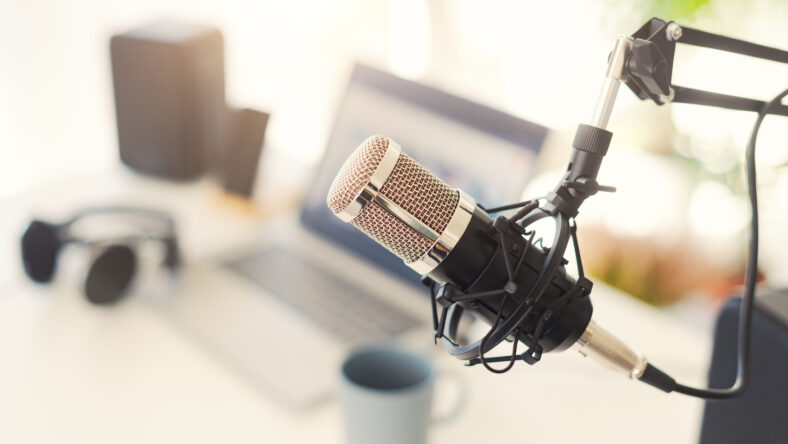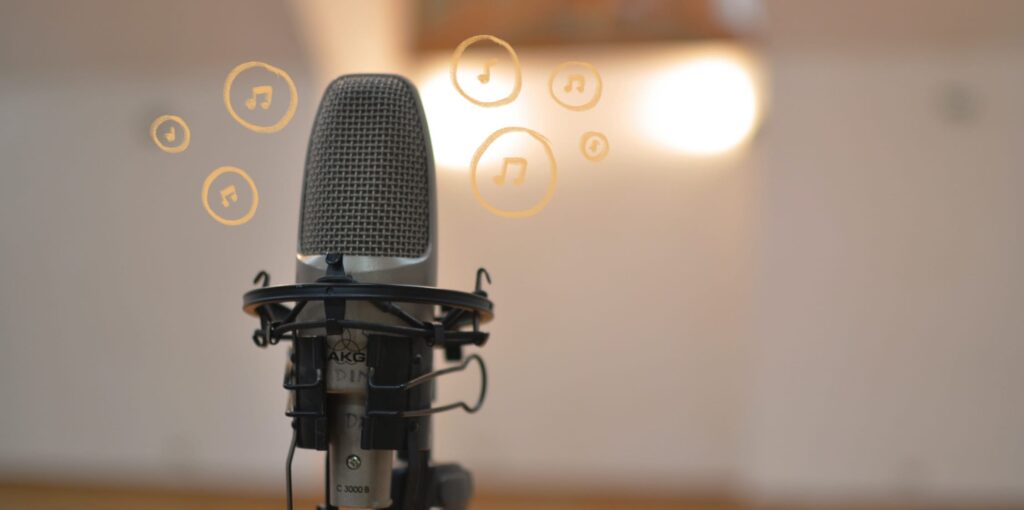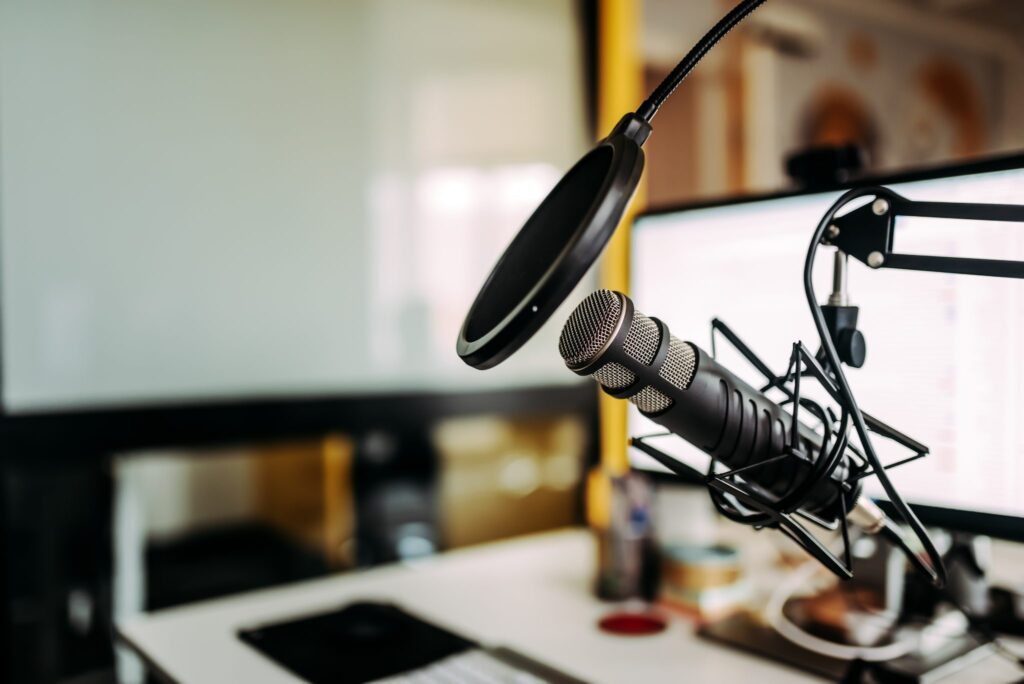Podcasts are on the high tides right now. They are in real personalised interviews, a documentary or an audio/video niche-specific series. All of them have the motive of sharing information or entertaining the audience.
Podcasts come in two types- videos or audio. However audio podcasts are always in more demand than videos. These podcasts are available to you all the time. You can listen to them while driving, cooking, or even in the bathroom. However, we don’t suggest the bathroom thing to do. Happy living is important though.
The new element in the entertainment industry after videos is these podcasts. Anyone can start a podcast and make it successful. They just need to know the simple podcast success formula and implement it throughout their journey.
Read More – Binaural Audio Mix VS A Stereo Audio Mix- Which One You Should Go For?
How Podcasting Works?

Let’s first understand what Podcast is. Podcasts are digital audio blogs using content pieces as raw as possible. The content can be of any niche and becomes a never-ending supply for you. You can understand this new era of digital blogging as personalised radio with each creator as a radio jockey.
The podcast is a free service that offers an audio experience to the users. The users go to a platform and choose the subject that they want to listen to. All they need to do is choose a digital audio player that pulls the audio podcast files when users search for it. This feels like listening to an audio song on several audio platforms.
Also Read about – How You Can Create Your Own Dolby Atmos Sound?
How to Start a Podcast?

Starting a podcast is not that difficult to be true. You need the right guidance for your step-by-step journey. Gladly we have listed all the steps you need to create your first podcast for real. Here we divide your complete journey into three parts.
– Planning & Preparation.
– Creating Your Episodes
– Recording & Equipment
– Editing & Production.
– Marketing & Promotion
Planning & Promotion:
1. The Big Why?
The first thing about starting a podcast is not grabbing the opportunity to do it. It is smart to sit down with yourself and find out some strong reasons to start a podcast. The answer to ‘WHY’ is your inspiration & first step to your success. Whatever profession you’re in, think and look for what you can offer to your audience.
2. Who is Your Listener?
Until you have a target audience, you can’t grow. Understand that not all people are your listeners and having a closed circle will help you create the right content, get the right reviews, and visible improvement as well as word-of-mouth publicity for your brand.
3. Give Your Audience a Reason to Listen:
Your audience doesn’t want to listen to rubbish conversations. Your podcasts must offer them something. It can’t be void. Whether you’re a writer, a media person, an educator, or a self-help coach, your podcasts should offer value to your audience. Remember content is the king.
4. Name Your Podcasts:
Finally, let’s decide the name of your podcast. Don’t get so excited with the names but understand the impact of your name on your podcast. Here you can go in three ways.
– You can keep a clever name that will later become your brand. Make sure to keep it simple & easy to remember.
– Choose a descriptive name for exactly presenting your podcast’s subject.
– Start your podcast by using your name.
Read More – Dolby Atmos VS Spatial Audio- How the Audio Industry Is Going to Change Forever?
Creating Your Episodes:

1. Decide Your Podcast Length:
Each niche is different and accordingly, you need to create your content as well. A short podcast can last a maximum of 15 minutes whereas long podcasts can go up to 1 hour. A sweet podcast is 20-40 minutes long.
2. Decide Your Frequency of Posting:
Content is the king and consistency is the queen. First, decide the frequency of your podcasts. Understand the fact that you’re not publishing content on Instagram or social media. Twice a month or once a week is good enough for podcasts. However, daily short podcasts are becoming the next boom.
3. Give Better Titles to Your Podcasts:
Jump into some copywriting tips and write better titles for your podcasts. Boring titles with numbers are outdated now. Titles should be catchy and show the exact real meat of the show.
4. Choose a Format:
Different podcast formats are for different approaches.
– The solo show for monologue podcasts.
– The co-hosted show with a partner or friend.
– The interview shows names in the niche you’re working on.
– One host with many guests.
– Documentary show
– Doc-drama show
( SAS Recording, Mixing, and Mastering Sound in Atlanta )
Recording & Equipment:
1. Audio Recording Equipment:
The bare minimum you need is a good mic, a computer, or a smartphone, and a good internet connection. USB microphones are also a good choice to go with. Using a smartphone may limit your features but the liberty it offers manages everything else.
2. Recording & Editing Software:
When you are done recording, you need to edit it next. There are paid & free both kinds of platforms including smartphone apps that you can use such as Audacity & Adobe Audition.
3. Scripting Your Podcasts:
You’re done with your equipment & editing software. Now it’s time to script your podcast. You want to share but what? Your podcasts must have strong scripting to catch every second of the viewer’s attention. However, listening to a man reading the script is boring. Believe me, it will take weeks to get comfortable doing this.
– Start with a reason to listen.
– Learn storytelling.
– Make your podcasts emotionally enriched.
4. Using a Mic:
Talking to the mic is difficult and the most important part. Like scripting, feel free to record, test, and find mistakes, delete, and record again for days for your first podcast. Here is one tip to do so with excellence.
– Pretend your mic is a second person and talk.
– Talk as the mic is your best friend.
5. Recording a Remote Guest:
The most popular method is to use ‘Zoom’ and similar platforms. But you will face the issue of noise breaking down at times. Use the ‘Double-Ender’ call recorder to solve this.
read more – Top Benefits to Know About A Recording Studio in Atlanta
Editing & Production:
1. Editing Applications:
We have already talked about Audacity. You can use such an application for editing your raw files. Another way to do so is to hire a third person to edit your audio.
2. File Type for Podcasting:
Though the most common format is .mp3, it’s not always equal. Below are some file types that most platforms will ask you to choose.
– Bitrate: 96kbps for spoken word podcasts. Also, choose the constant CBR bitrate.
– Go mono if your podcast doesn’t feature loads of music.
– Go for 44100Hz.
3. Find the Right Music:
Music is not a necessity. But it enhances the impact of your words or shows. Also using music in a podcast reflects professionalism. Find music from the royalty-free sections in YouTube or some stock, or library music.
Marketing & Promotion:
1. Podcast Cover Art:
The first few seconds of impressions are everything so make sure not to waste them. Create a fabulous illustration for your podcasts as your cover art.
2. Podcast Hosting Platforms:
Choose your podcast hosting platform or media platform. These are different platforms and will not be used by listeners. They are hosting websites from where platforms like iTunes will pull the audio files.
3. Submitting it to Directories:
Once you’ve uploaded the files on your media host, most of them will automatically upload your files to podcast platforms where users can access your content. Otherwise, there must be a manual guideline on how to do so.
4. Next Steps to Do:
Don’t think much. It’s okay to be nervous but it’s great to stand against it. Continue to do what you have done but better.
– Share your content & ask your listeners to share as well.
– Ask for criticism and improve each day.
– Learn storytelling.
– Get better at recording, voice modulation, and editing.
– Set realistic targets and achieve them.
– Move to the next big number.
( Behind the Scenes: An Atlanta Music Recording Experience )
Conclusion:
Podcasts are becoming crazy famous and in demand. If you’re a content creator or a professional in any field; if you have loads of stories to tell, it’s high time to be in the podcasting field.
In this article, we have shared the exact detailed blueprint of the Podcast Recording Success Journey. Now it’s your turn.


Leave a Reply